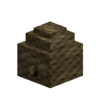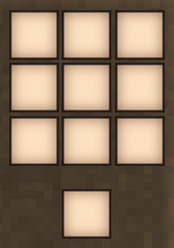Guide:Prepare for Winter
Not only can your character starve to death, but you can die of hypothermia. Assuming you used the default settings for starting in a temperate region, you can expect around 5 months of weather too cold for farming and other things. "Make hay while the sun shines."
Save for wintertime
It's tempting to build a big, beautiful house as soon as you get a saw. But unless you're already prepared for winter (or living in a tropical region), you should delay those plans until freezing temperatures reduce the list of things you could be doing. See Guide:Productivity_in_winter for more specifics.
Food
Get a farm started as soon as you have access to seeds and medium fertility soil near water. Flax is especially useful, but it's a poor food source for people. Because a balanced diet increases your character's maximum health points, I focus on 1 other grain as a food source, and 1 vegetable. So my crop rotation usually looks like this: flax as the K crop, rye as the N crop, and parsnip as the P crop. See Guide:Farming for more detailed guidance.
If you have access to honey, cook jam and seal it in crocks so you can have fruit out of season.
If you have access to quartz and fire clay, consider making a greenhouse to extend the growing season. See Guide:Greenhouse for more detailed guidance.
Vegetables and grains last quite a long time in a properly-constructed cellar, especially in a storage vessel. A cellar is easiest to make underground. See Guide:Cellar for a few simple ideas.
Warmth
A fur coat is easy to make with pelts. All you need besides raw hide is a lump of fat. 1 lump can treat up to 4 small hides, 2 medium hides, or 1 large hide. A huge hide requires 2 lumps of fat. Then let the hides sit somewhere to cure for awhile (on the ground is fine). Make fur gloves and fur boots the same way.
If you look in the Handbook at the recipe for a fur coat, you'll see that any hide size can be used. In terms of fat, it's cheapest to use a huge hide or 8 small hides for the coat; for the boots and gloves, all recipes have equal fat costs.
| Item Name | Item image | Warmth | Sold by | Craftable by all Classes? | Crafting | |||
|---|---|---|---|---|---|---|---|---|
| Fur coat |  |
4 | Survival goods trader | Yes | ||||
| Fur gloves |  |
1.5 | Survival goods trader | Yes | ||||
| Knee-high fur boots |  |
3 | Survival goods trader | Yes | ||||
You might be able to find a trader selling clothing items as good for warmth as furs, but probably not better.
Fur clothing as well as regular clothing can be repaired. Above 50% durability, an item gives its full warmth value. If it drops below 50%, I like to repair it with squares of linen. Pick up the linen with left click, open your character panel with C, and leftclick on the item you want to repair. 1 flax twine restores 10% durability to an item, 1 linen square (4 flax twine) restores 50%, and a sewing kit (4 flax twine and a stick) restores 75%. However, I usually don't have any linen or twine to spare my first year (prioritizing farming and windmill).
If you're wearing nothing that gives a warmth bonus, your body temperature will start dropping when you're outside in below-zero temperatures. If you're wearing clothing that gives you a total of 10 warmth points, your body temperature will stay at 37.8 until temperatures get below 10 degrees.
Tip: remove fur coat etc in the spring, to save for next winter, rather than consume its durability wearing it 24/7.
Explore
Not only do you take damage from getting too cold, but snow makes several things harder to find, or more time-consuming to obtain. During summer/autumn, explore widely (thousands of blocks away from your base) and mark your map with things that might be useful later:
- clay deposits, especially fire clay
- fruit trees
- resin
- peat
- dense patches of flowers (especially woad or horsetail)
Also, use the prospecting pick's density mode. If you get readings for an ore you're interested in, spend a bit more time trying to find the "local peak", and set a chest there with ladders, oil lamps, and crates. Mark that spot on your map, but save the actual digging for winter (or sooner, if you're all prepared). See Guide:Prospecting for mining advice.
Chores
Some processes pause in cold weather. Stockpile on these while you can!
- Replant cattail roots close to your base, and harvest the tops every time they appear.
- Plant trees near your base; while waiting for them to grow, collect lumber from further away .
- Oak is useful for leather and sticks.
- Pine is useful for charcoal (because pinecones have such a high drop rate and pines tend to grow tall).
- Grow as much flax as you can. Harvesting a ripe plant has a 20% chance of yielding a second seed.
- Replace most Harvestable skeps with empty skeps; stash the honeycomb for later.

|
Protip:
Use a Plumb & Square on 1 populated skep, to prevent yourself from accidentally breaking your last one. Alternative ideas: place 1 populated skep higher, or on top of a warning sign. |
This guide by:
T.Read, July 2024
| Wiki Navigation | |
|---|---|
| Vintage Story | Guides • Frequently Asked Questions • Soundtrack • Versions • Controls |
| Game systems | Crafting • Knapping • Clay forming • Smithing • Cooking • Temperature • Hunger • Mining • Temporal stability • Mechanical power • Trading • Farming • Animal husbandry |
| World | World generation • Biomes • Weather • Temporal storms |
| Items | Tools • Weapons • Armor • Clothing • Bags • Materials • Food |
| Blocks | Terrain • Plants • Decorative • Lighting • Functional • Ore |
| Entities | Hostile entities • Animals • NPCs • Players |
| Miscellaneous | List of client commands • List of server commands • Creative Starter Guide • Bot System • WorldEdit • Cinematic Camera • Adjustable FPS Video Recording • ServerBlockTicking |
